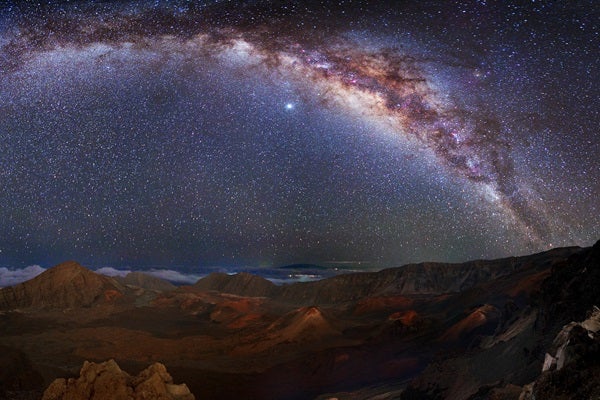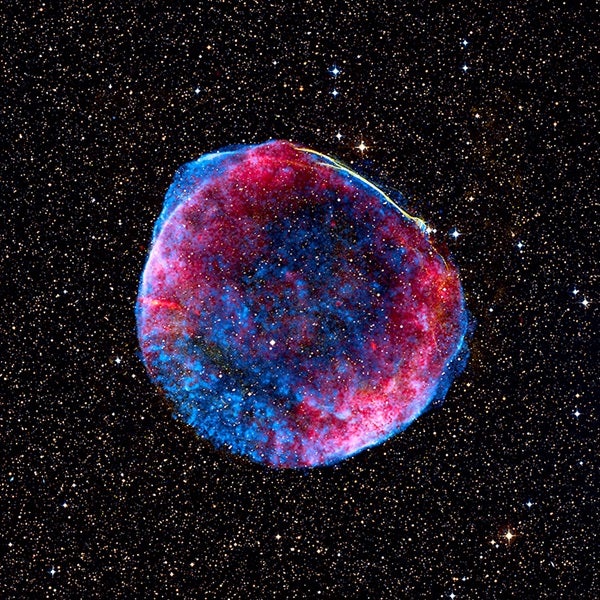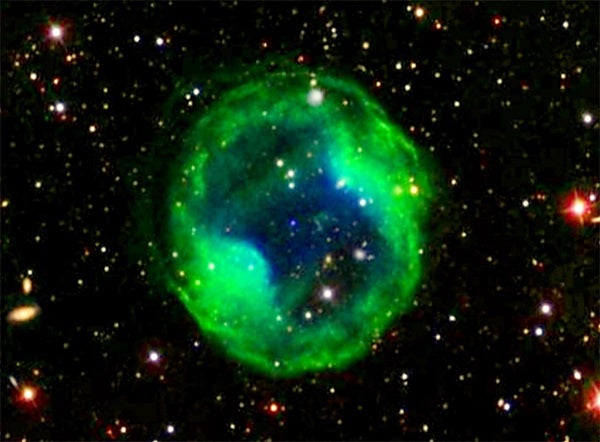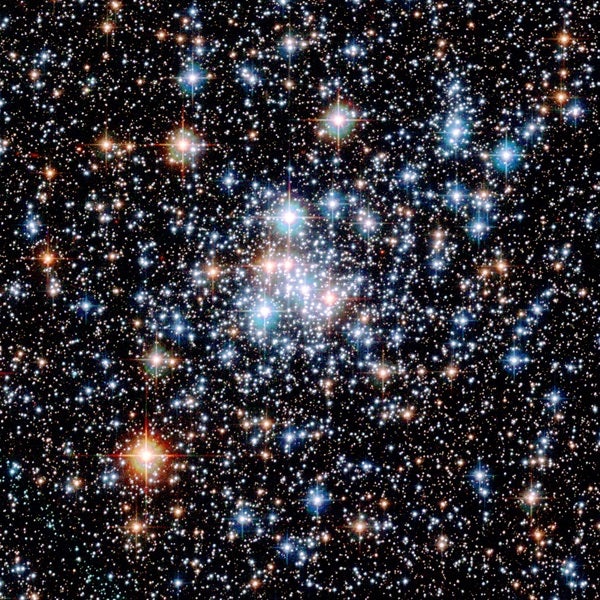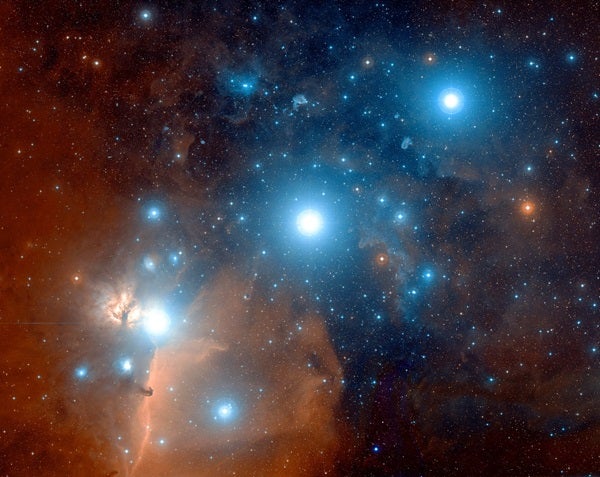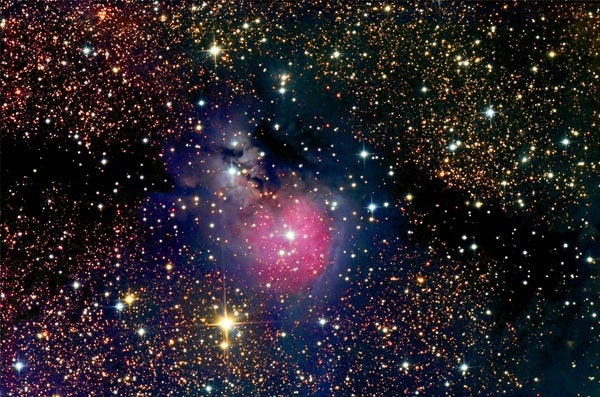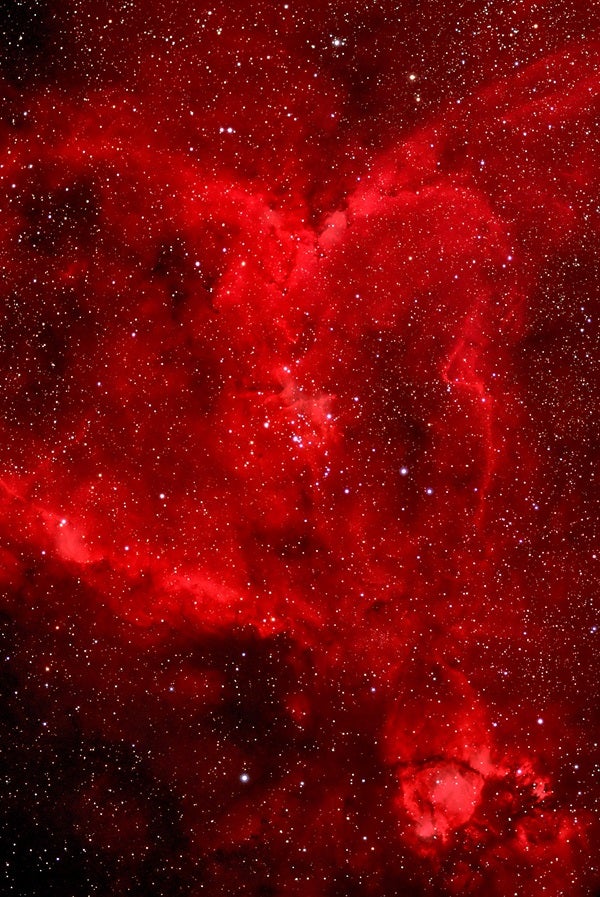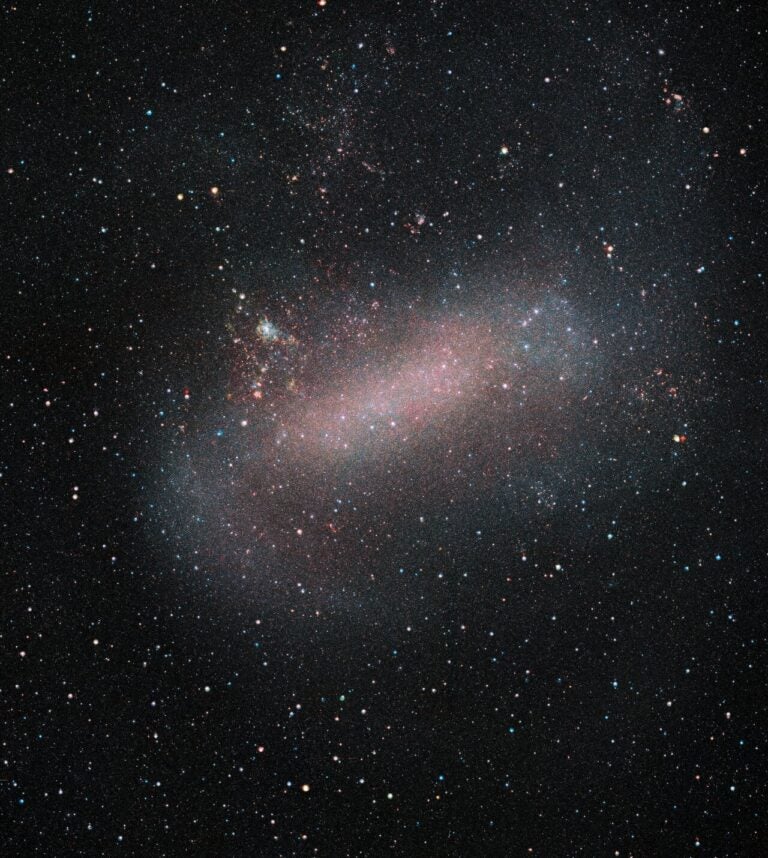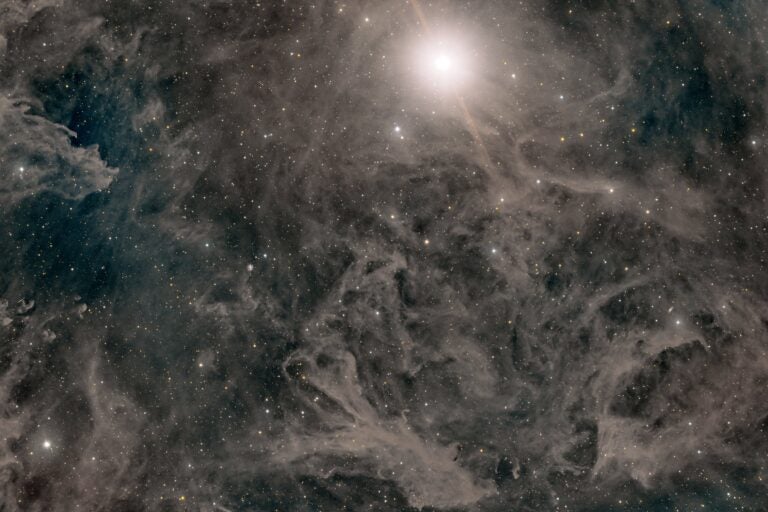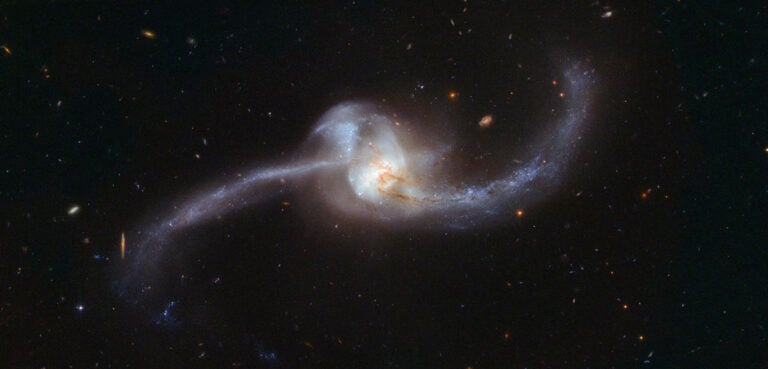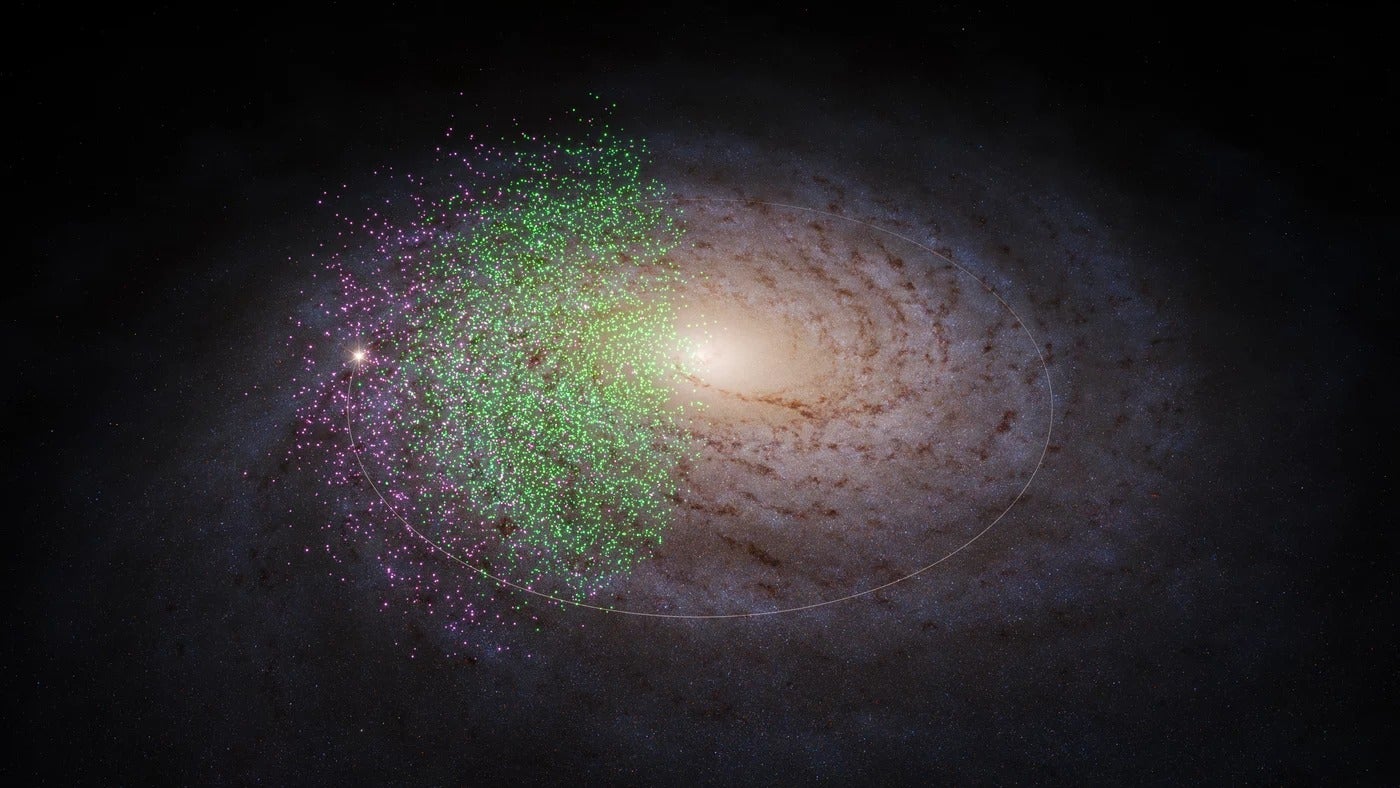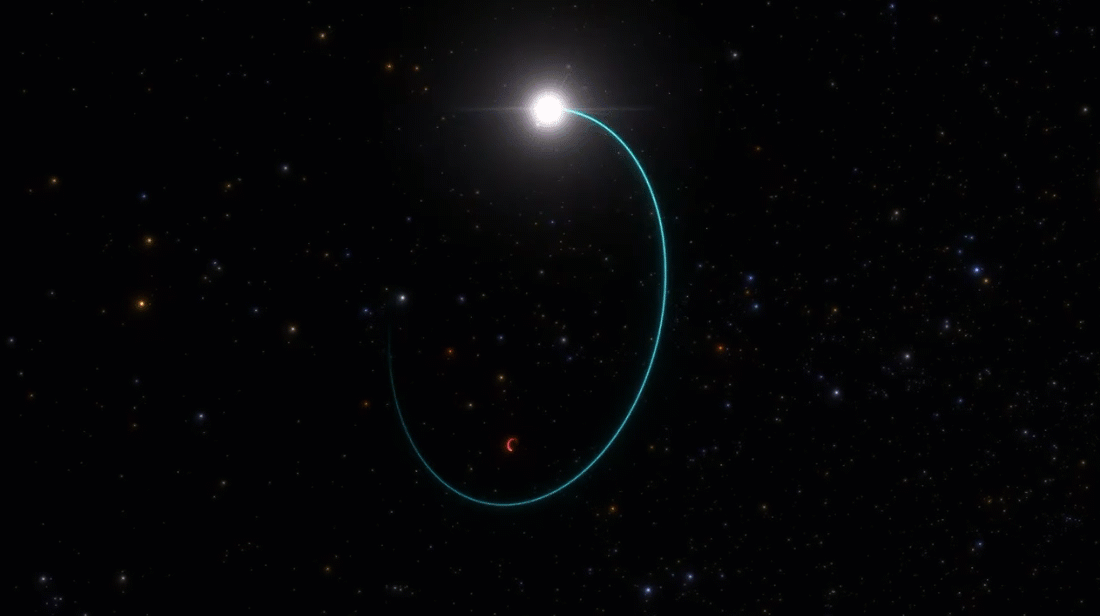The Romans called it Via Lactea, or the Milky Way. But a name used by a tribe in South Africa’s Kalahari Desert better hints at this glowing lane’s true nature: “The Backbone of the Night.” For the Milky Way is nothing less than the full structure of our galaxy seen edgewise. As 18th-century scientists began to realize this, the Roman name for a cosmic highway became our galaxy’s name.
When Galileo Galilei turned his spyglass to the Milky Way in 1610, he revealed for the first time that its glow was individual stars “so numerous as almost to surpass belief.” For centuries after that, astronomers suffered from a forest-for-the-trees problem: Because they were in the galaxy, they couldn’t easily map it.
That changed in the 1920s when a new generation of large telescopes, coupled with photography, revealed that some “nebulae” were galaxies in their own right. Decades later, the first surveys at radio wavelengths tracked how the galaxy’s gas moved and mapped the winding arms that classify the Milky Way as a spiral galaxy.
Star stuff
The visible galaxy principally contains stars and the massive clouds of gas and dust that form them. Astronomers estimate that the Milky Way contains 200 billion stars or more. Most are small red dwarfs that shine only feebly but will far outlast our Sun. A few are behemoths 100 times the Sun’s mass that burn so bright they make nearby gas clouds glow. Long before our Sun’s fires subside, these stars will end their days in spectacular supernova explosions.
Some stars barely shine at all. They never generate energy in their cores through true hydrogen fusion, the power source that heats stars most of their lives. But when young, they can produce energy by fusing a rare form of hydrogen called deuterium. These objects, called brown dwarfs, measure between 1.2 and 7 percent of the Sun’s mass. With surface temperatures as cool as one-tenth of the Sun’s, brown dwarfs are marginal stars — yet they may be as numerous as “the real thing.”
Stars born with eight or more times the Sun’s mass don’t have such a peaceful ending: They explode. The blast shatters the star into a superhot, rapidly expanding shell of gas that peppers the galaxy with the heavy elements only massive stars can forge. Supernova remnants may be identifiable for more than 50,000 years, but fewer than 300 are known in the Milky Way. Astronomers believe supernovae occur only about once or twice each century in the galaxy.
Hot young stars initially gather together, often near their natal gas clouds. Because the stars in these groups gradually disperse, astronomers call them open clusters. The Pleiades (M45) and the Beehive (M44) clusters, both plainly visible to the naked eye, are open clusters observers have known about since antiquity. Astronomers have cataloged more than 1,100 open clusters in the Milky Way, and our galaxy may contain as many as 100,000.
Another kind of star cluster is radically different. Tens of thousands to perhaps a million old stars congregate in giant balls called globular clusters. These stars are gravitationally bound into densely packed spheres no bigger than 200 light-years across. With ages greater than 10 billion years, the stars in these clusters are nearly as old as the universe itself. While some other galaxies harbor thousands of globular clusters, fewer than 200 such clusters orbit in the Milky Way.
Early in the last century, the differences between these open clusters and globular clusters guided astronomers to an overview of the Milky Way. Open clusters orbit in a disk-shaped volume that also contains nearly all of the galaxy’s gas and dust, the seed for new stars. This disk is about 1,000 light-years thick and has a radius of roughly 60,000 light-years. The Sun lies about halfway from the center to the disk’s edge.
Sitting in the center of this disk is a roughly spherical “bulge” about 12,000 light-years across. Astronomers believe a supermassive black hole weighing about 4 million times the Sun’s mass lies at the bulge’s center. Most of the bulge stars are old, but, perhaps surprisingly, a few massive young clusters have formed near the galaxy’s center. Gas clouds colliding in the crowded environs a few hundred light-years from the black hole may have enabled these clusters to form.
Globular clusters orbit the same central mass as objects in the disk, but they do so in wildly inclined paths. Because their orbits often take them through the disk, globular clusters are subjected to forces that can knock some of their stars loose. Over time, these clusters can dissolve. Some, such as Palomar 5, have been imaged displaying tails of escaped stars that lead and follow the cluster in their orbits. The Milky Way once may have sported hundreds of globular clusters — all we see today are the survivors.
Astronomers refer to the Milky Way’s halo as the “realm of the globular clusters.” The halo component is a spherical volume a little wider than the disk. Here, there is no star-forming gas to make new stars because as the galaxy developed, the gas gradually flattened into the disk. The quick rush of star formation that formed the halo globular clusters was followed by billions of years in which they gradually dissolved, their stars cast throughout the Milky Way’s halo. Astronomers estimate that over the next 10 billion years, half of the galaxy’s remaining globular clusters similarly will fall apart.
There’s more going on in the halo than dissolving globular clusters. Tides from the Milky Way’s massive bulk shred dwarf galaxies as they pass near or through the disk. Our galaxy — indeed, most galaxies — may have been built by gobbling up many smaller galaxies.
The evidence is hard to ignore. The Milky Way appears to have appropriated at least three globular clusters from the Sagittarius Dwarf Galaxy, which is now being torn apart on the far side of our galaxy. And astronomers believe that Omega Centauri, the largest and brightest globular cluster, is actually the leftover bulge of a dwarf galaxy long ago shredded by our own.
Most of the Milky Way’s mass remains unseen. Beginning in the 1930s, astronomers began to recognize that galactic motions could not be completely accounted for by the combined gravity of visible stars, gas, and dust. By the 1970s, it was clear that galaxies like our own also possessed large amounts of mass far beyond the spans of their disks.
Astronomers called this stuff “dark matter” because they couldn’t see it and didn’t know what it was. They still don’t. Nevertheless, studies show that the Milky Way resides in a roughly spherical dark-
matter halo about 600,000 light-years across — some five times the disk’s diameter — and that this volume contains roughly 90 percent of the galaxy’s total mass.
Back in the Milky Way’s disk, massive, cold gas clouds provide plentiful raw material for making stars. As knots deep within these clouds gravitationally collapse, spin up, and grow hotter, new stars are born. Computer models of the process predict that collapsing and rotating clouds may fragment, and these fragments may produce stars themselves. This could explain why most stars in the galaxy occur in gravitationally bound groups of two or more. In this regard, our lone Sun is in the galactic minority.
Once a star ignites its nuclear fuel, outflows clear away the remaining gas. In any young cluster, a few massive, hot stars grow so large and burn so hot that they can dramatically reshape — and even burrow through — their birth cloud. The complex interplay of creation and destruction results in some of the sky’s loveliest sights, such as the Rosette Nebula (NGC 2244) and the Eagle Nebula (M16). These so-called emission nebulae, which number in the thousands, can contain enough material to build 100,000 stars like the Sun.
The Orion Nebula (M42), a stellar nursery just 1,350 light-years away, is one of the nearest and best-studied star-forming regions. Outflows from the hot stars at its center have blown away gas and dust from the surface of the massive cloud that formed them. Emission nebulae glow because intense ultraviolet radiation from the hottest, most massive stars energizes the gas to emit visible light in different colors. In fact, a single star produces 95 percent of the energy responsible for lighting up M42.
Some of the material around a newborn star may form solid bodies, like asteroids, comets, and even planets. Since 1995, astronomers have identified more than 3,700 worlds around other stars. Based on this discovery rate, astronomers believe the number of planets in the Milky Way could top a trillion.
Many of the initial planets discovered were supersized versions of gas giants — worlds like Jupiter and Saturn that have no solid surface. But since then, astronomers have found planets with masses similar to Earth’s and even smaller, and they estimate that up to 60 percent of nearby Sun-like stars could have Earth-like worlds. If so, direct imaging of such planets may be possible within a decade.
Astronomers are planning the next phase of galactic exploration with a new generation of space-borne and ground-based telescopes. We have already found dissolving globular clusters, shredded mini-galaxies, new Milky Way satellites, and a form of matter that remains unidentified. What this new assault on understanding the home galaxy will reveal, we can only guess.

